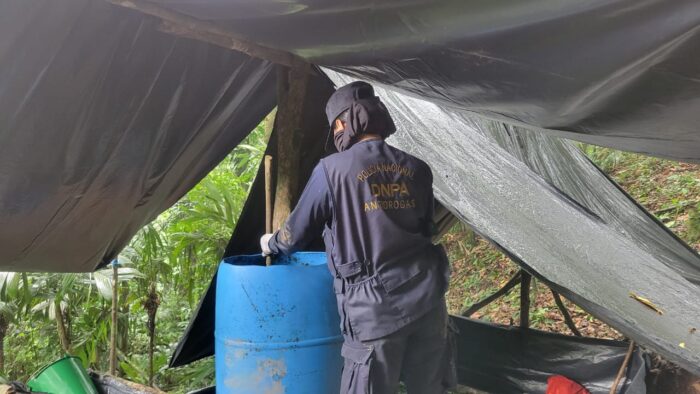Honduran National Police reported yesterday, October 12, 2024, that they seized 45,000 bushels of alleged coca leaves, 1,000 seedlings of alleged coca leaves and a long shotgun-type weapon. Regarding the coca leaves, these are typically harvested to make cocaine. The discovery was made in the village of San Marcos, in Pico Bonito National Park.
How coca leaves are harvested
According to recovered.org, the cocaine production process involves harvesting coca trees, extracting coca paste, and using “solvents to dissolve and crystallize the cocaine base, with excess substances removed to create bricks of pure cocaine or the basis for powder cocaine.”
recovered.org added, “A single plantation may contain around 12,000 coca plants and a plantation owner will have workers who harvest leaves from the shrubs.”
recovered.org continued:
One coca leaf contains 1% of cocaine.
The harvested coca leaves are transported to a treatment facility or lab, often a rudimentary shack hidden in the jungle. The leaves are placed in a large trough and a mixture of water and nitric acid, and over the course of three days, plantation workers will ‘work’ the mixture of coca leaves similar to how wine is traditionally made.
Once the leaves have been treaded, the liquid that is produced are added with lime and gasoline and placed into barrels for cooking. The chemical reaction produces a syrup-like substance. The thick syrup mixture is then placed in a muslin or other fabric and squeezed until all moisture has been removed. What remains is the coca paste, which contains between 30 and 90% pure cocaine.
recovered.org concluded:
The cocaine paste or cocaine base is transported from the jungle to a buyer. Buyers use solvents to dissolve and crystallize the cocaine base, with excess substances removed to create bricks of pure cocaine, or the basis for powder cocaine. This process takes several days for the coca mule and they run a high risk of being captured by the military or murdered by rival mules for their product. Drug cartels repackage the cocaine and sell it to drug dealers.
In some areas, crack cocaine is more popular than powdered cocaine and drug dealers can make their product go much further with crack addicts. The powdered cocaine is cooked further in order to remove the hydrochloride (salt) from it, producing a rock-like substance after cooling that is typically known as crack cocaine.
The Pico Bonito seizure
Honduran National Police said the shrubs of coca leaves found in Pico Bonito National Park had “an average height of 1.5 to 2 meters” and were planted in “an area of five blocks of land.”
Honduran National Police added, “During the operation, in addition to the plantation, a rustic laboratory equipped with various supplies and specialized logistics for the extraction and processing of coca paste was found.”

Commenting on the seizure, the Honduran National Police said:
The importance of this discovery is highlighted as part of the efforts to dismantle criminal structures dedicated to drug trafficking in the Atlantic region and prevent these illicit activities from continuing to affect the well-being of communities and the country’s biodiversity. Likewise, the operation is a clear example of the effectiveness of coordinated work between the different police departments to combat organized crime and drug activity in Honduras.
This seizure is a significant step in the fight against the scourge of drug trafficking, which not only harms public health, but also the environment. In this way, the National Police consolidates its commitment to continue generating strong results against drug trafficking in its various forms.
The operation comprised the National Directorate of Special Forces, the National Directorate of Border Police Services , the Anti-Mara and Gang Police Directorate Against Organized Crime, the Police Investigation Directorate and the National Directorate of Prevention and Community Security.